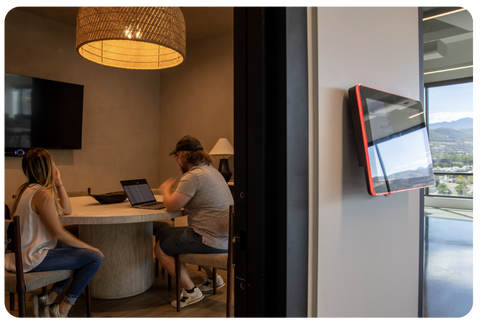Digital Equity for Workers: Using PowerBx to Solve Digital Needs
The internet is regarded as the most participatory form of mass communication since so many people and organizations use it for learning, working, and shopping. When it comes to ensuring equitable access to services in the digital era, that might be a concrete fact. In fact, by highlighting the glaring disparities in access to technology and the internet, the pandemic, which forced many workers to work remotely, has drawn attention to the existing digital divide. A data portal estimates that 64.4 percent of people worldwide use the internet, which means that more than 30% of people worldwide do not have access to the internet. In the context of digital equity, this is the access gap that is frequently highlighted.
However, digital equity actually goes beyond the internet. Sometimes, members of an organization may not have the devices necessary to access the internet. Consequently, beyond the internet, digital equity ensures that, among others, IT managers, business professionals, office managers, facility managers, designers, and engineers have the necessary devices to excel in their respective industries. Among these devices are computers, smart TVs, gaming consoles, e-readers, cameras, projectors, and streaming players, among others.

This article provides a fair explanation of what digital equity is, why it's a problem that needs to be fixed, and how companies might employ their resources to expand opportunities for employees. Read on to discover more.
What is Digital Equity?
Digital equity is a condition in which everyone has equal access to online resources and opportunities irrespective of their socioeconomic situation or location. Digital equity, according to the National Digital Inclusion Alliance (NDIA), is "a condition in which all individuals and communities have the information technology capacity needed for full engagement in their society, democracy, and economy."
In a corporate setting, the lenses are modified to concentrate on how to integrate certain technologies into the office environment, to make everyone feel equal. An environment with technology that will serve the company, remote workers, on-site workers, hybrid workers, and the employer equally. On a zoom screen, for instance, all boxes have the same size, but what happens if there are 5 persons in a room and 2 are joining remotely? Will they all have a digitally equitable experience? Do the remote persons feel excluded or less of themselves when the cameras are out?
The demand for digital equity at work stems from its capacity to close the gaps among those who work onsite, those who work remotely, and hybrid workers, ensuring that everyone has an equitable work experience. A situation where a remote employee of an organization is integrated into the team, culture, and environment of the organization as if they were physically present in the office alongside the other on-site workers.

Benefits of Digital Equity
Digital equity ensures a smooth leadership experience in an organization. With digital equity, an organization's leadership becomes deliberate about utilizing the diverse assets and talents of all of its employees, regardless of their race, location, or age. Team leaders intentionally create an environment that celebrates diversity, guarantees that everyone is heard, and makes the most of the different viewpoints of the employees. This further helps the staff feel a strong sense of belonging. According to data from TechRepublic, employees who feel like they belong at work are more productive, motivated, and likely to contribute to the utmost extent possible.
With digital equity in place, there is a great opportunity for employees to work cross-functionally. Cross-functional teams are frequently formed by organizations on an as-needed basis to work as a group throughout the course of a particular project, presumably from its inception until the project's successful completion. However, some organizations can now arrange their personnel in permanent cross-functional teams when digital equity in the workplace is prioritized. Even though working in a cross-functional team is difficult enough, it could appear that dispersing the team throughout a nation or even the world would make it even harder. It does in a lot of ways. Even with modern technologies, communicating across borders can be challenging.
Beyond language barriers, it can be challenging to grasp one another's opinions due to diverse social and cultural backgrounds and business practices. All of these are taken into account by digital equity for quicker and simpler collaboration leading to exposure, insight, and networking opportunities. Additionally, it will increase understanding of the company's best practices, which will allow staff members to hone their organizational, leadership, and planning skills. The employee then transitions from being a contributor to getting worthwhile leadership experience.
Physical distance between remote workers and on-site workers can hinder team communication, which in turn can restrict opportunities for collaboration, obstruct the exchange of varied viewpoints, and sustain structural disparities over time. You can create a psychologically secure environment and boost morale, creativity, enthusiasm, productivity, and retention by going the extra mile to make your remote staff feel connected, appreciated, and revered through digital equity.
Clarion Call
Nowadays, the majority of businesses are implementing measures to encourage more equity at work. Digital equity should be one of these measures' cornerstones. This can begin in the vicinity of a business. Evaluate the state of broadband access in the areas where your business is located, and then do something to change it. All businesses may benefit from resolving digital inequities, and more businesses should look into how to accomplish it. For a more diverse and equitable workforce, especially in remote work situations, equal access to the internet and the devices required to access it are essential.
How PowerBx is accelerating Digital Equity for Workers
The modern workplace has changed as a result of technology. While many people still commute to work, some employees have the choice to work from home. Some organizations don't even need a physical location; they run online. In addition, the dynamics of many professional, working relationships have changed as a result of the replacement of in-person meetings with video conferences using apps like zoom, GoogleMeet, GoToMeeting, etc.

Even while all of these are now widespread, if not managed appropriately, remote interaction may lose its effectiveness. For their distant engagements, many workers, for example, only use digital tools and apps they can purchase or have access to. However, for the sake of productivity, organizations should ensure that employees have access to the appropriate tools to carry out their work anywhere.
Many remote employees load their devices with a variety of tools in an effort to increase productivity, but this just makes notifications from various apps flood in. These prevent them from being as profitable and productive as they ought to be. To resolve this, organizations might provide specific tools like Sanebox which guarantees that only important messages reach the inboxes of the employees. This can help them save six hours of unproductive engagement per week. Also, tasks and meetings can be arranged effectively with the help of Google Calendar. Companies can even use calendly and then integrate it with zoom. Workers can use this to set up meetings with other team members and vice versa. This eases collaboration and results in productivity.
PowerBx uses specialized hardware and space management software to let organizations reserve, find, and manage workspace. Through site assessment, software consultation, software integration, and project deployment, PowerBx provides a comprehensive solution from the start of a project. Employees now have a great opportunity to be more efficient on the job if they have access to a platform that helps them schedule and reserve meeting rooms simply and quickly.

It is true that Zoom transformed remote meetings, but it can take some effort to locate and use all the settings from a laptop screen. Participants of Zoom meetings could be observed searching for the screen capture or screen sharing button rather than contributing to the discourse. This annoying issue is resolved when Zoom is used in conjunction with the PowerBx Zapp pad. The 22 distinct Zoom instructions are available on the Zapp pad, which utilizes Bluetooth to connect to any device. It allows quick access to all of the preferred Zoom hotkeys and is small enough to be shared among several people. In order to monitor how frequently and how many people use the meeting room, it features smart cameras that can count the number of people present in a meeting. The camera also follows the speaker's voice as it moves around the room, ensuring that even those who are not physically present are always a part of the discussion. Everyone present in the meeting is more engaged and the meeting becomes livelier. With this amazing experience, the meeting can be easily recorded, afterward transcribed, and transformed into useful resources for the organization.

Additionally, PowerBx in hybrid teams is a critical tool that enables the staff to select the ideal location for that important meeting. With PowerBx, you have the superpower to manage who has access to which offices. Employees and guests can check themselves with a freestanding screen, using the self-check-in capability of PowerBx's Wave Stand. This allows you to manage office traffic without the use of a front desk worker.
Is your workspace ready for the future? PowerBx is that future you need!

